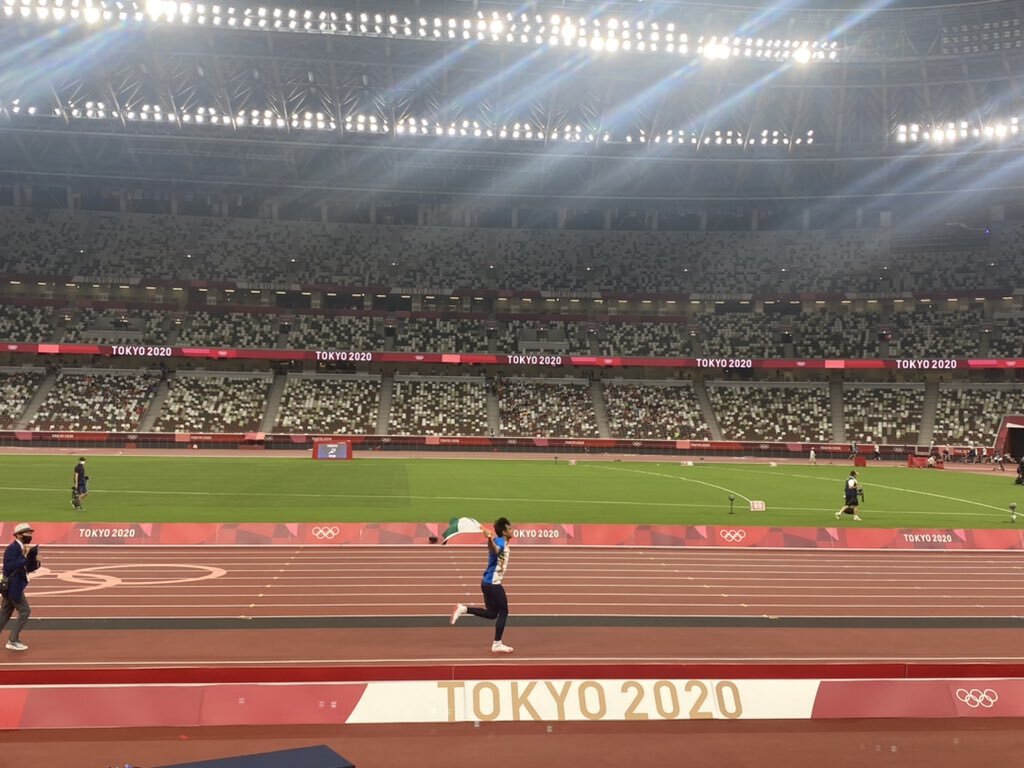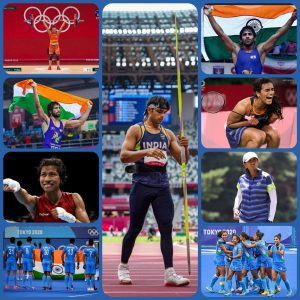
How is it that the US got 39 gold medals and India just 1 in Tokyo?
India needs to devise well though out plans to improve its Olympics track record; jumping on exceptional victories or dumping money won't do.

There was a sense of anger, if not outrage, among the American athletics fraternity, after their men’s contingent managed only two gold medals in the track-and-field action at Tokyo Olympics. No less than the legendary Carl Lewis called out the squad, not mincing words as he laid into the 4×100-metre relay quartet that, not for the first time, botched a baton exchange and failed to even make the finals.
India, by contrast, is still basking in the warm afterglow of a historic maiden athletics medal, gold at that, thanks to the brilliance of Neeraj Chopra. The young man from Panipat punched turf with the javelin at a magical 87.58 metre in his second attempt, sparking frenzied celebrations in a country starved of consistent global sporting success. Chopra, 23, deserves every accolade that has been heaped on him, every reward and award that has been promised (hopefully, they will be realised). What he has inadvertently done, however, is help image-conscious influencers sweep myriad failures under the carpet and continue to pretend to live the lie that all is well.

So much has been made of India’s ‘best ever’ Olympic showing that the uninitiated can be excused for believing the medal count was in the 20s, at the very least. In reality, India came home with seven medals – one more than their best previous haul, in London, nine years back – and finished a disappointing 48th on the medals table. Far more impoverished and far less celebrated nations left India comfortably trailing in their wake. Credit to them, of course, but it says little of India’s pursuit of excellence that we are content to allow large oceans of mediocrity to be repeatedly eclipsed by isolated bursts of incandescence of the sort Chopra, and a select few others, provided.
It’s not that other countries don’t receive state funding, but India is somewhere near the top of the pile when it comes to direct funding from the central government through various driving channels, not least the catchy TOPS (Target Olympic Podium Scheme). If only money could buy glory… It’s not so much how it is invested as where the money goes, towards what ends it is funnelled, that becomes crucial. Clearly, the output would indicate, there is much work to be done on that front.
Also read: Arigato, Tokyo. Bonjour, Paris: Curtains come down on memorable Games
India’s sporting system is professional only in name. Not more than a handful of federations/associations have accountable employees who don’t have the option of hiding behind the ‘love of the sport’ security blanket that honorary positions throw up. The hockey revolution, only highlighted by chest-thumping television ‘experts’ because of the stirring deeds of both the men and the women in Tokyo, hasn’t come about overnight. Much planning and plenty of thought have gone into a process that began several years back.
The results have been consistently rewarding in the last little while, especially on the men’s front, though as Rani Rampal’s brave warriors showed, they can only be discounted anymore at one’s own peril. Is it mere coincidence, then, that Hockey India, the sport’s governing body in the country, has had a Chief Executive Officer for nearly a decade now? Or that, intriguingly, said CEO is an Australian who answers to the name of Elena Norman?
Norman has acknowledged that being a non-native has made it easier for her to take the hard decisions. In a nutshell, and most likely unintentionally, she has hit the nail on the head. In most other Olympic disciplines, a buddy-system bureaucratic roadblock is a norm rather than the exception. Accountability is an ugly word banned from the lexicon as favours are curried and quid pro quos abound.

Until other disciplines embrace the hockey example and do away with their crony-cosy mindset, things are unlikely to change. India can only look green-eyed at the sustained dominance of the United States and Australia, or of China and Russia. There is a diametric difference in approach between the first set and the second, yet both have proved hugely successful.
In the US and Australia, for example, individual sporting bodies are encouraged to be self-sufficient, to raise their own resources and to use them sensibly and in a structured fashion so that they put their heart and brain where their mouth is. Their visions and plans are outlined in black and white, with High Performance at the top of their charts. They don’t operate on a wing and a prayer, hoping that money ploughed into various sports would translate to gold medals at Olympic Games and World Championships.
Also read: Tokyo Olympics: The Black Swan of Indian sports
It helps that there is an inherent sporting culture in those two traditional sports powerhouses. In the US, specifically, collegiate sport is a major draw. A multitude of Olympic champions in individual sport gravitate towards the US so that they can access not just the best training facilities but also the best sports science and the best coaching. One of the reasons the US is so hard-pressed to maintain their overwhelming dominance of the past is that they are willing to throw their doors open to high-class athletes from elsewhere because collegiate sport is so competitive and universities view investment in the sport as a must-do.
The situation is vastly different in Russia and China, obviously. The government is hands-on. It’s fascinating to reflect on the fact that China didn’t compete in the Olympics until 1984. In Seoul in 1988, they won five gold medals; 20 years later, when Beijing hosted the Olympics, the Red Dragon topped the gold medal count with 48, a whopping 12 clear of second-placed US.
Also read: When bronze glows like gold: India’s hockey team wins medal after 41 years
That’s because China handpicks young kids – by young, we mean those yet to hit their teens – and put them through the grind, six days a week, allowing them to visit their families only a few days every year. They target disciplines established superpowers frown upon. Remarkably, three-fourths of their golds before Tokyo came in only six disciplines – badminton, diving, gymnastics, shooting, table tennis and weightlifting – though now they are spreading their tentacles far and wide.
A piece in The New York Times recalls how in 1949, Mao Zedong, the leader of the Communist revolution, urged his country to develop its muscle and shed its sick man of Asia tag. He would have been proud to see the giant strides made in the last 72 years.
Also read: Dahiya becomes only second Indian wrestler to win Olympics silver
In India, leaders are happy to jump on the bandwagon after the event. The desire to associate ourselves with champions is ingrained in our systems very deeply. And that’s but the tip of the iceberg. The morass under the water is complex and widespread; willy-nilly injection of crores of rupees is definitely not the only solution.





